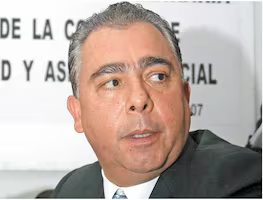Más Información

Sheinbaum: “Hay muchas leyes que vamos a presentar”; alista paquete de reformas “muy trascendentes” para Pemex y CFE

Anuncian 100 mil apoyos de mejoramiento de vivienda para el oriente de Edomex; estos son los requisitos

Decisión del TEPJF quita pretexto para impugnar elección: Sheinbaum; acusa que SCJN quiere impedirla

Profeco revisa quejas de reembolso por “Emilia Pérez”; llama a Cinépolis a “recomendar” en vez de “garantizar” películas

Vinculan a proceso a “El Chavo Félix”, yerno de “El Mayo” Zambada; lo detuvieron con pastillas de fetanilo

Marko Cortés pide a Sheinbaum rechazar “Quédate en México”; podría desatar problemas migratorios, señala
Mario Pani Darqui
was a prolific Mexican architect and urban planner who participated in several construction projects which shaped and defined the outlook of Mexico City during the first half of the 20th century.
He studied architecture in Paris, where he was deeply influenced by the Bauhaus School and the ideas of Le Corbusier.
Once he returned to Mexico, Mario Pani designed some of the most ambitious construction projects for Mexico City, such as key buildings of the University City campus of the UNAM, the National Conservatory of Music, and several apartment complexes.
He once presented a project for the Reforma-Insurgentes intersection but his comprehensive plan – which included a roundabout, an underpass, and many other elements – was officially discarded in 1956.
A similar story happened when he came up with the idea of a well-connected suburban city for the working classes. Pani wanted people to build a city offering all services to its community, including an easy way for the daily commute of its inhabitants – which turned out to be Ciudad Satélite (roughly, Satellite City). Sadly, the project as Pani had originally envisioned it was never built.
For his work, Mario Pani was awarded the National Arts Award in 1986. He died in Mexico City, on February 23, 1993.
According to Google , today's doodle was drawn by Pani's son, Knut Pani , and it depicts some of the key buildings his father designed.
am



